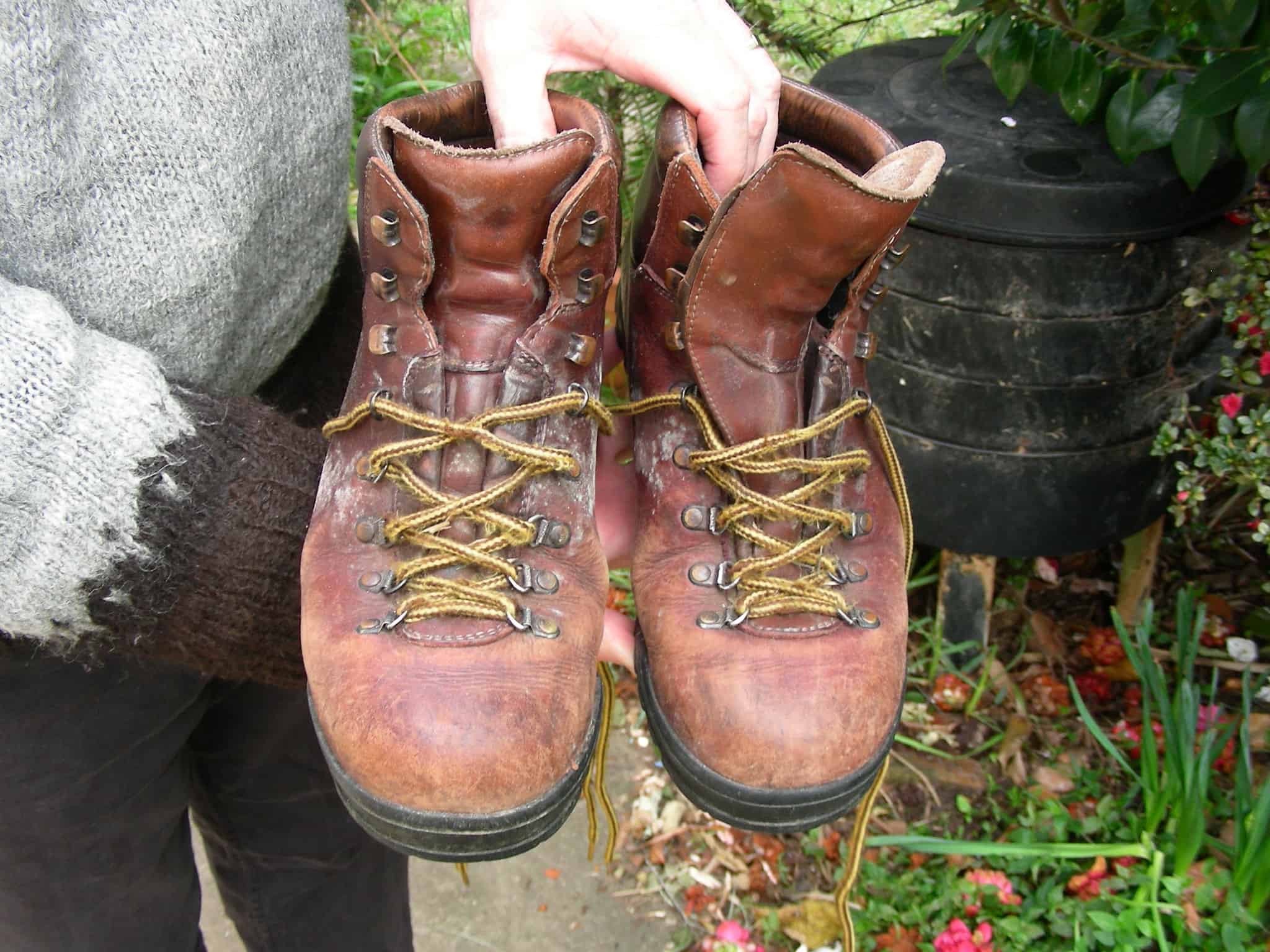Last updated on February 15th, 2023 at 11:34 am
Hiking in wet or muddy conditions with sweaty feet can create a perfect environment for the stinkiest smelling hiking boots. Unfortunately, no amount of deodorizing balls, Febreze, or newspaper will take away the stench of mildew or mold. Here we detail how to clean smelly hiking boots with solutions that work.
In this post we overview why hiking boots get so smelly, and how to get rid of the stench. With these straightforward tips, you can get your fresh boots back.
Why Do Hiking Boots Get So Smelly
Boots are bittersweet in their function.
Hiking boots are particularly great at repelling and wicking away environmental moisture, especially the water-resistant variety. In addition, most are great at keeping your feet insulated and warm.
So why the bittersweet?
As a result, these qualities of hiking boots can cause sweat and bacteria to be absorbed into their fabric, which is unlikely to escape.
Plus, when you’re adventuring in muddy and wet places, hiking boots provide a dark and warm home for mold and stinky bacteria to grow. And once they take hold, it’s hard to get them out.
Luckily, this stench and gross environment can be removed and cleaned, even from waterproof boots.
Quick Deodorizing Hiking Boots
First, it’s often tempting to try and cover up the smell of hiking boots with deodorizing sprays like Febreeze. However, this doesn’t actually remove the stench or get to the root of the odor.
If you’re in need of a quick fix that actually removes stench after a sweaty hike, try the following tips.
Wash your Insoles
Your insoles trap a ton of bacteria and sweat, making them particularly smelly.
To get rid of this, remove your insoles and wash them thoroughly in warm water and dish soap. You’ll be amazed with how much this simple step can help.
Furthermore, you can cover in baking soda and allow them to dry in the sunlight.
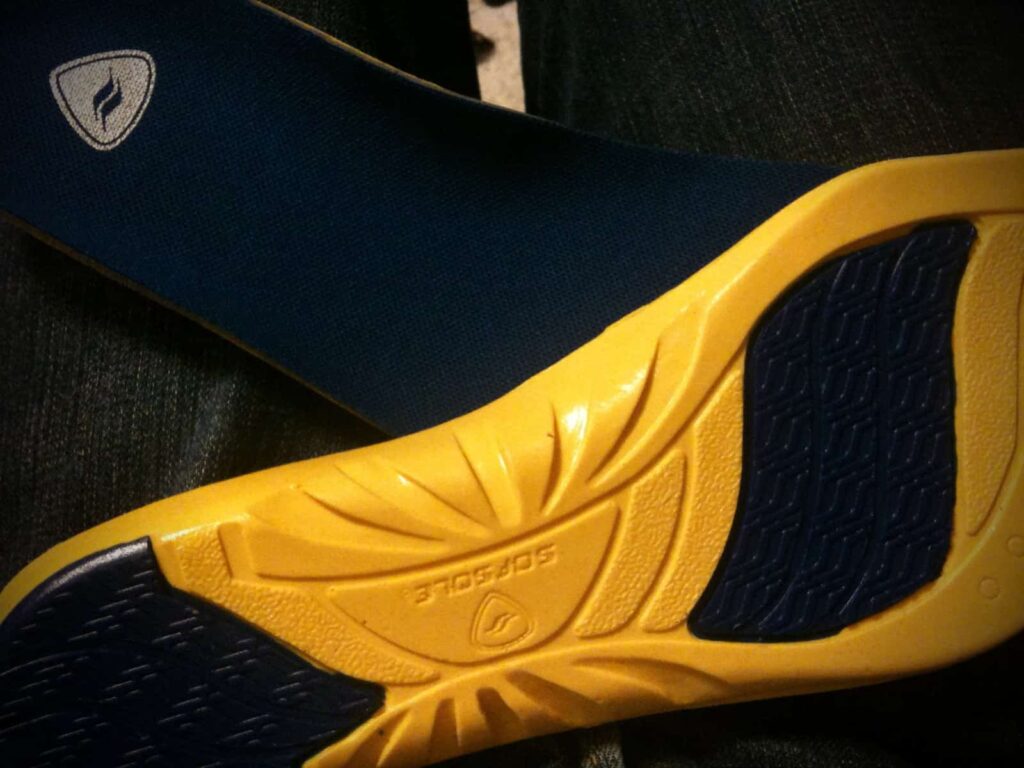
Use an Odor Eliminator for stubborn, deep smells
Next, consider scrubbing your boots with a strong odor eliminator product.
Those specifically designed for sports, like Revivex Odor Eliminator, are best; Revivex is meant to tackle and eliminate the most serious of smells that athletes deal with.
Dry Insoles
Final Setting your insoles out to dry in the sun is one of the best ways to dry them.
UV light also has antibacterial properties, which helps combat leftover bacteria.
In addition, you can place insoles by a fan to help dry them faster. Sometimes I will put them back in my boots and place them on the boot dryer for a few hours.
Avoid putting your insoles in the washer or dryer, since the high heat can damage them.
That being said, I always wash and dry my insoles in machines and have never had an issue. However, yours may be affected if you use special orthopedics or hike in high-end boots.
Additionally, consider a nice new pair of waterproof boots to replace any boots that are not salvageable. We’ve found the best of the best in our Best Hiking Boots for Flat Feet post.
How to Deep Clean Your Hiking Boots
While a quick deodorization of your boots might help in the short term, sometimes your boots need a deep cleaning.
This is especially true if you’ve been on several sweaty hikes and/or hiking in muddy and wet conditions.
Bacteria and mold can build up in your boot and fester, leading to a worse smell over time.
Here you’ll discover how to deep clean your hiking boots step-by-step to remove their stench.
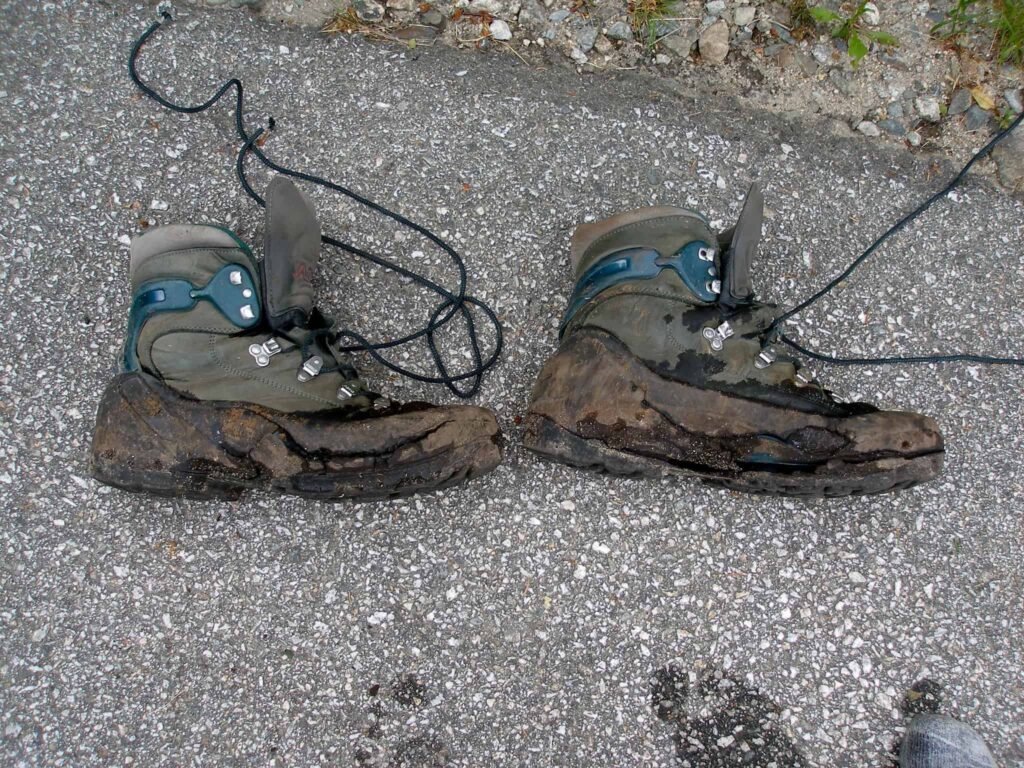
1. Prep Your Boots
Firstly, to prep your boots for washing, remove your insoles as well as your laces.
You’ll be giving your boots a good scrubbing, so you want to make sure you can reach in the nooks and crannies.
2. Rinse and Scrub the Outsides of Your Boots
Mud from hiking can pack into crevices in your boots, and even cake on the outside.
Next, you’ll want to rinse your boots down thoroughly to remove caked mud, then scrub them with dish soap and a scrub brush.
An old toothbrush also works like a dream to get into grooves, in creases of the tongue, and into rock plates on their soles.
Afterward, rinse your boots clean.
Ideally, you’d do this after each muddy hike. Especially with leather boots, since wet mud will sap the vitality out of leather if allowed to dry.
3. Submerge Boots to Clean Inside
Next, to clean the inside of your hiking boots, you’ll need to be able to submerge them.
Find and fill a utility tub, plastic bucket, or bathtub with warm water. Add any detergent to the water.
Submerge your boots fully and scrub the insides with a small brush.
You’ll want to focus on the ridge around the bottom of the footbed (on the interior), since mold and bacteria breed well there.
4. Use a Specific Enzyme-Based Odor Product for a Better Clean
To get an even better clean, try adding an enzyme-based odor eliminator to the wash tub. The enzymes will help break down tough bacteria and odors so you get a more thorough clean.
Often, bacteria that cause odor can get deep in the material of our boots, where our scrubs can’t reach. Powerful enzymes can reach these areas and break down any bacteria that may be lurking there.
Revivex Odor Eliminator is a particularly good choice!
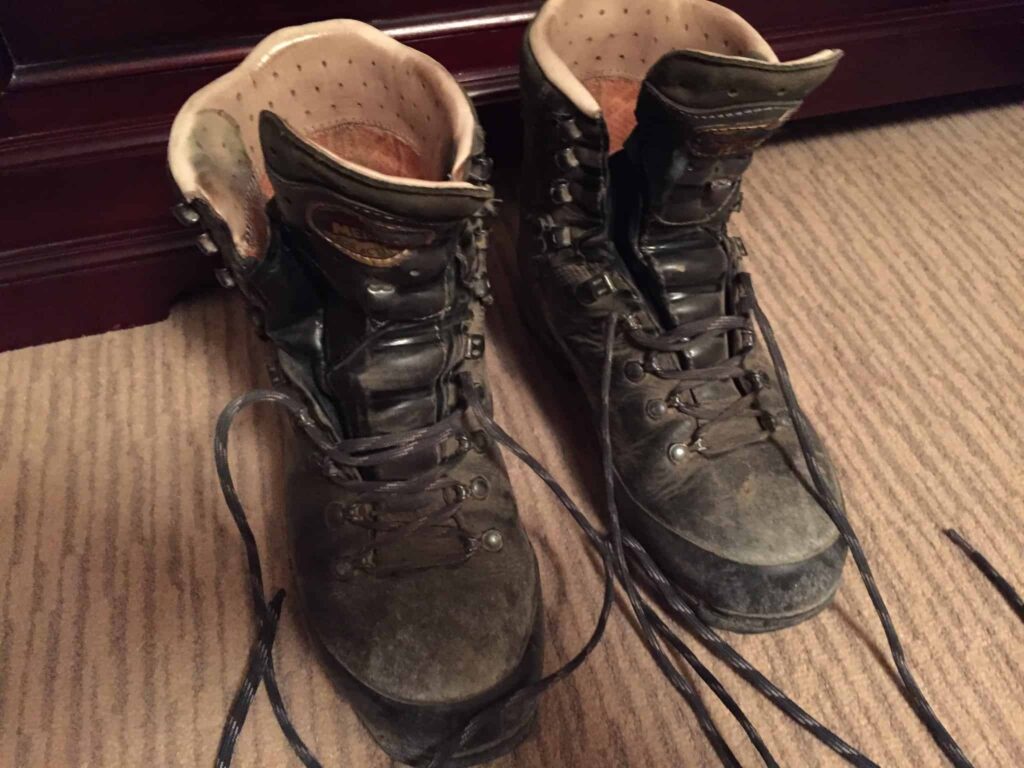
5. Clean Laces and Insoles
Finally, Add your insoles and laces to the same water and give them a thorough scrub as well. Ideally laces and insole would be allowed to air dry, but a trip to the dryer is fin in most cases.
Importantly, don’t add these back to your footwear until your boots are dry to allow adequate airflow.
6. Dry Boots Thoroughly
Drying your boots thoroughly is an important part of the cleaning process. You’ll want to dry your boots in a warm, dry environment.
Setting your boots out in the sun or using a boot dryer can help speed up drying time.
However, avoid putting your boots in the washer or dryer, as the heat can damage glues and leather materials. Plus, the jostling of the washer and dryer can also cause damage.
You should also avoid putting your boots close to the fire to dry, as the direct heat can damage them. The last thing you want is for the glues or metals on your boots to melt from the heat of the flames.
How to Prevent Hiking Boot Stench
Additionally, a small amount of prevention can go a long way in keeping your hiking boots stench-free.
Try out these tips below to maximize the time between your deep cleans.
Periodic Deep Cleaning with ReVivex
As we’ve seen, deep cleaning periodically with a sports cleaner and deodorizer such as ReVivex can keep boots stench-free. First, get into the habit of deep cleaning after a couple intensive, sweaty, or wet hikes.
The key with these periodic cleanings is to eliminate any bacteria or odors that have built up over time. These will be very hard to eliminate with just preventative steps like baking soda, so it’s best to keep up on maintenance.
Baking Soda Post-Hike
Baking soda is a silver bullet. We buy enormous boxes from the dollar store and use it for everything from cleaning pots to sprinkling into our boots.
Adding just ½ to 1 cup to the inside of your boots will help absorb odors overnight. And, you can also use this after your deep clean to add another layer of odor protection!
In the morning, simply dump out any excess baking soda from your boots. This option is very inexpensive; however, it doesn’t offer as much prevention as a sports-level deodorizer.
If you’re not wearing socks in your shoes, for instance, you’ll need to use this step inside your boots but also wash your insoles in Revivex more often.
Regular Maintenance with a Deodorizer
Additionally, we recommend regularly using a professional deodorizer like Defunkify Odor Remover can help keep smells at bay.
Defunkify uses a blend of ionic silver and bacteria-fighting essential oils to eliminate bacteria in your boots.
While it won’t be as effective at removing long-time odors as ReVivex, it is excellent for preventing smells from developing.
After regular upkeep you’ll find yourself enjoying nature more thoroughly without worry. In fact, check out the best tools for viewing trails in our Best Compact Binoculars for Hiking and Backpacking post.
Wear Taller Socks
Interestingly, the height of your socks can also help prevent smelly hiking boots! This is because tall socks can help wick away moisture from the interior of your boots better than short socks.
Also, note that you should be wearing moisture-wicking socks (no cotton), so that sweat doesn’t build up.
Definitely avoid naked, sweaty feet in your boots as well.
I’m guilty of this more often than not. I’ve always had an aversion to feeling socks seams on my toes. But there are plenty of synthetic sport socks that I wear w hen they’re clean, and the difference in boot stink is immediately evident.
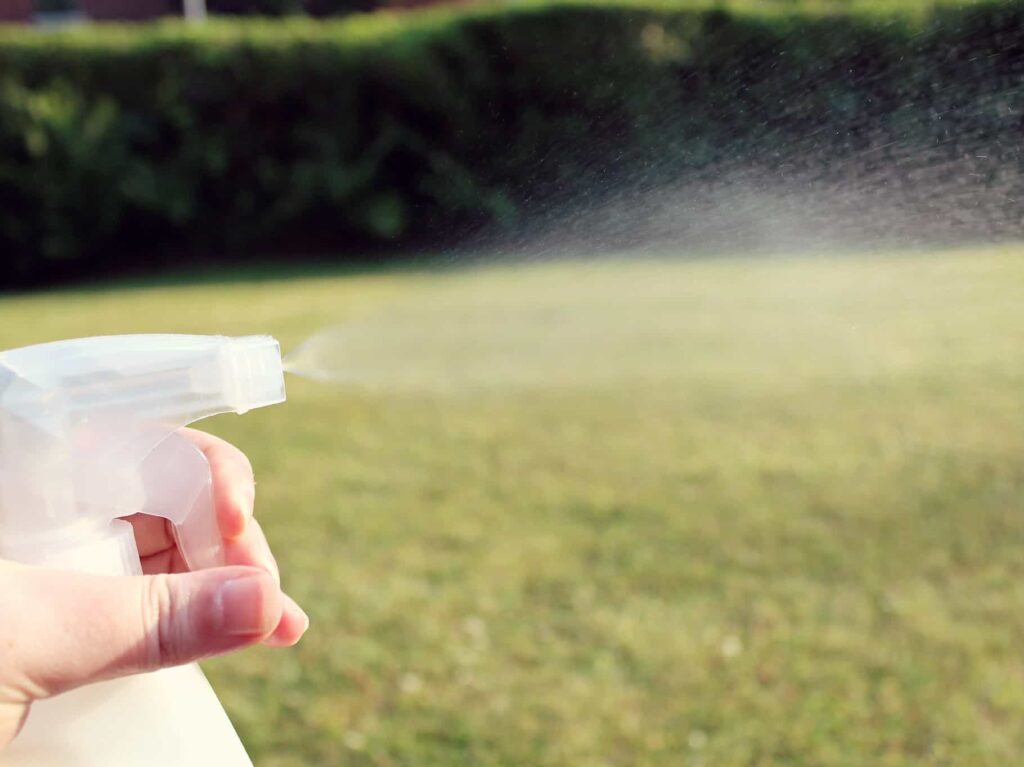
Vinegar or Alcohol Spray
As we’ve seen, bacteria, mold, and mildew are the cause of smelly hiking boots.
This is why using bacteria-killing sprays like white vinegar and/or isopropyl alcohol can be useful.
Spray these into your boots and on your insoles after a hike to kill any budding bacteria.
Fully Dry Boots Before Wearing
Additionally, you may be tempted to put on your boots after a cleaning, even if they aren’t 100% dry.
Avoid this; the leftover moisture will be a breeding ground for new bacteria.
Plus, you’re welcoming potential blisters, chafing, and pruny feet.
Clean Your feet
Finally, you should also make sure your feet are clean and dry before putting them in your hiking boots.
Clean feet prevents introducing more bacteria and/or dirt into your boots to feed the problem. So give those toes a scrub!
This can be hard, especially if you just finished walking in a river bed, for example. If you must have slightly dirty or sandy and wet feet, for example, definitely don some dry socks at least.
Can You Put Hiking Boots in the Washer?
Putting your boots in the washer seems like the easy route, but it is definitely not a good idea.
Not only can the heat damage the glues and leather material of your boots, but they also won’t get cleaned thoroughly.
Washers are unable to reach and scrub the interior of your boots, where odor-causing bacteria are. If it can’t reach the interior, it won’t remove the smell.
For instance, I like to toss my running shoes and insoles into the wash with our cleaning or beach towels, thinking they’ll scrub the shoes.
However, they literally always come out smelling the same, and I never learn. Plus, then my towels stink a little too.
Once you invest in a good bio-cleaner, you’ll immediately notice the difference, plus the savings on water and laundry detergent is tangible. Since I always have to rewash my towels with vinegar.

Can You Put Hiking Boots in the Dryer?
Finally, placing hiking boots in the dryer to dry them faster may backfire.
Your boots contain glues, rubbers, and leather materials that can easily be damaged by high heat.
Plus, the jostling of the dryer will only add to the damage.
If you’ve paid a premium for hiking boots, hand washing and air drying are the only way to go. Especially if they are leather.
Additionally, for waterproof or resistant boots, you may have to reapply a waterproof spray such as Nikwax TX.Direct or Nikwax Leather and Fabric Spray
Refresh Your Boots and Get Hiking
Ah, the infamous stinky boot stench. Spending time on the trail almost always equals smelly hiking boots. Often, this stench is hard to get out, since sweat and grime have been packed into your boots over time.
It’s no secret that hiking boots can develop a nefarious stench. However, this smelly aspect of adventure doesn’t have to be something you live with. By using these washing and prevention tips, you can get rid of odor-causing bacteria and keep them away. Enjoy your fresh boots on your next journey!
About the Author
Sarah Sampsell
Title Image Credit, How to Clean Smelly Hiking Boots: Doug Beckers | (source) | Attribution-ShareAlike 2.0 Generic (CC BY-SA 2.0)— reduced file size and image
Image Credit 1, How to Clean Smelly Hiking Boots: yoppy | (source) | Attribution 2.0 Generic (CC BY 2.0)— reduced file size and image
Image Credit 2, How to Clean Smelly Hiking Boots: Blake Johnson | (source) | Attribution-ShareAlike 2.0 Generic (CC BY-SA 2.0)— reduced file size and image
How to Clean Smelly Hiking Boots, Image Credit 3: Flying Puffin | (source) | Attribution-ShareAlike 2.0 Generic (CC BY-SA 2.0)— reduced file size and image
How to Clean Smelly Hiking Boots, Image Credit 4: athriftymrs.com | (source) | Attribution-ShareAlike 2.0 Generic (CC BY-SA 2.0)— reduced file size and image
Image Credit 5, How to Clean Smelly Hiking Boots: Clint Budd | (source) | Attribution 2.0 Generic (CC BY 2.0)— reduced file size and image

